Website speed is no longer optional for business success. We’ve seen countless Chicago businesses struggle with slow sites that drive visitors away and harm their Google rankings. The foundation of a fast website starts with choosing the right WordPress theme, but with thousands of options available, finding one truly optimized for speed can be challenging.
In this data-driven guide, we’ll compare the fastest WordPress themes using real-world performance metrics. Our team has tested these themes extensively to help you make an informed choice that balances speed with the features your business website needs.
Why Website Speed Matters for WordPress
Speed isn’t just about providing a better user experience—it directly impacts your bottom line. When pages load slowly, visitors leave. Studies show that 40% of users abandon websites that take more than 3 seconds to load. (Source: WP Rocket)
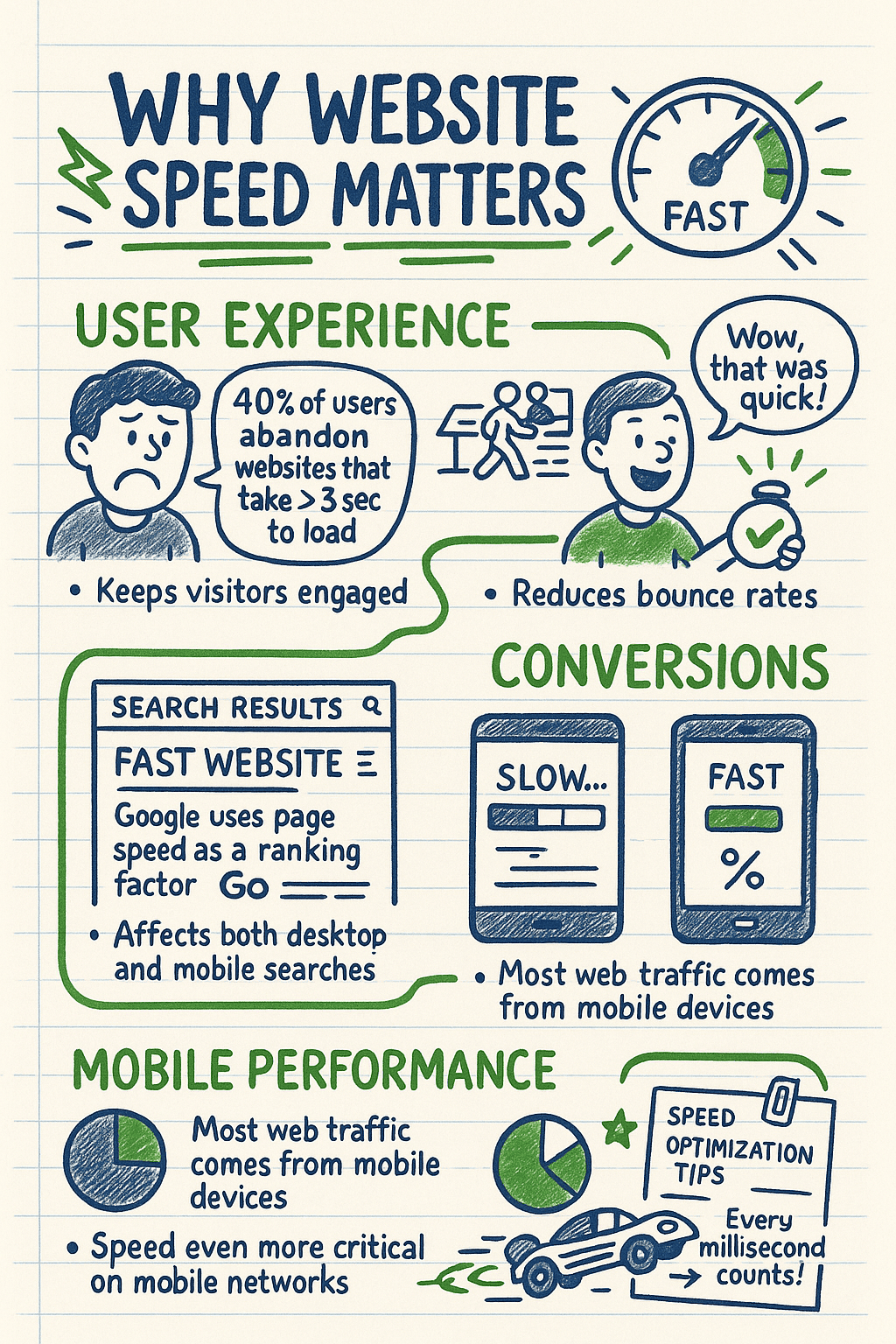
Here’s why speed should be a top priority for your WordPress site:
- Better user experience – Fast sites keep visitors engaged and reduce bounce rates
- Higher search rankings – Google uses page speed as a ranking factor for both desktop and mobile searches
- Improved conversion rates – Faster sites typically convert visitors into customers more effectively
- Mobile performance – Most web traffic now comes from mobile devices, where speed is even more critical
The theme you choose serves as the foundation of your site’s performance. A bloated theme with unnecessary features can significantly slow down your WordPress site, regardless of other optimizations you implement.
Key Factors That Make WordPress Themes Fast
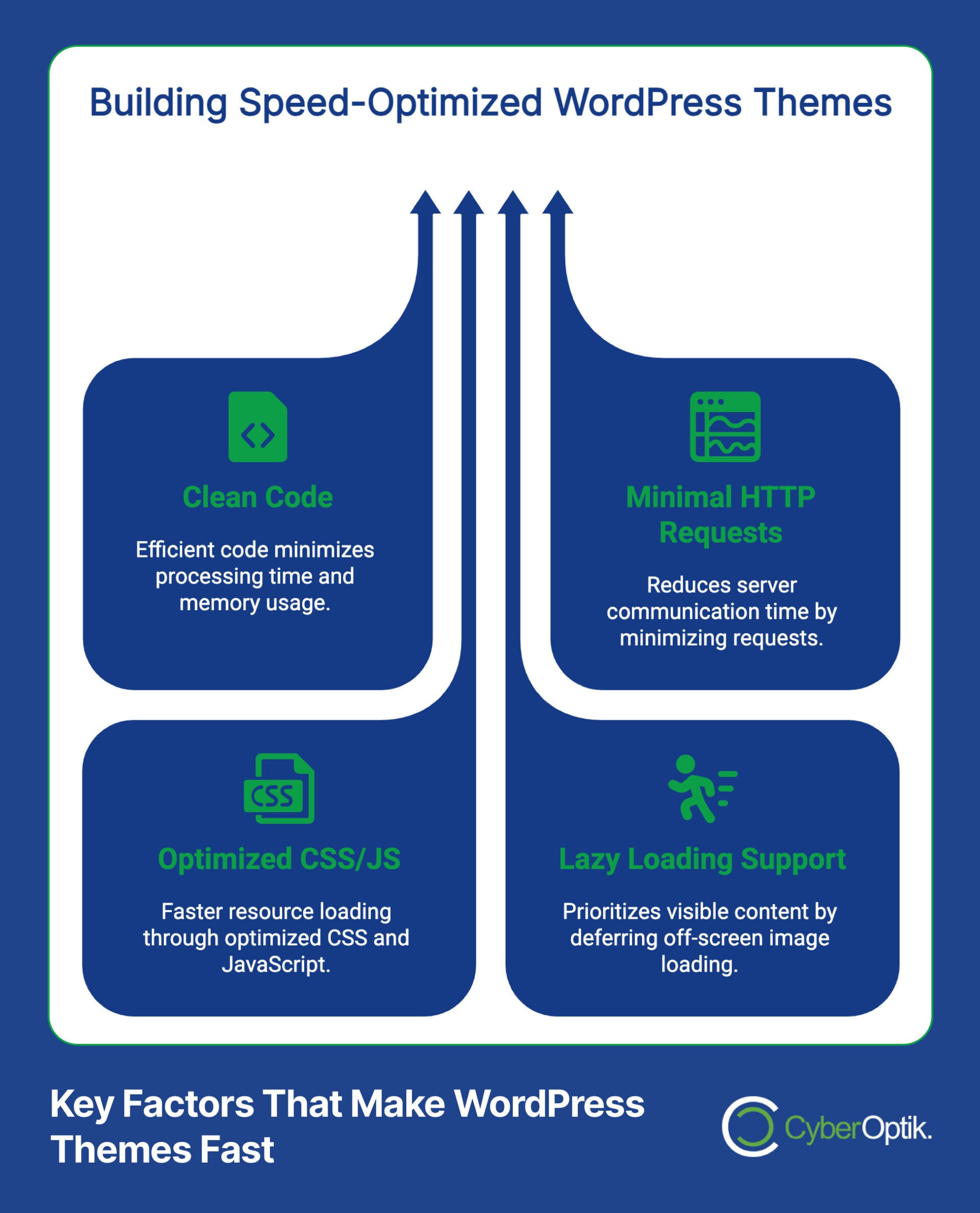
Not all WordPress themes are created equal when it comes to speed. The top performers share several important characteristics that allow them to load quickly and perform efficiently under various conditions.
Understanding these factors helps you evaluate themes beyond marketing claims and make an informed decision based on what actually affects performance.
| Speed Factor | Why It Matters | Impact Level |
|---|---|---|
| Clean Code | Minimizes processing time | High |
| Minimal HTTP Requests | Reduces server communication time | High |
| Optimized CSS/JS | Faster resource loading | Medium |
| Lazy Loading Support | Defers off-screen image loading | Medium |
These factors directly influence how quickly your WordPress site loads and performs. Let’s examine what makes the top-performing themes stand out from the crowd.
Clean, Lightweight Code Base
Fast WordPress themes use minimal, efficient code. They avoid bloat by removing unnecessary features and focusing on core functionality. This lean approach reduces processing time and memory usage.
The best themes for speed use modern coding standards and avoid outdated practices. They follow WordPress best practices and employ efficient PHP that executes quickly. This clean code foundation ensures the theme runs smoothly even on basic hosting plans.
Minimal HTTP Requests
Each element on a webpage that needs to be loaded (images, scripts, stylesheets) requires an HTTP request. More requests mean longer load times. Speed-optimized themes minimize these requests through smart resource management.
The fastest WordPress themes combine multiple CSS files into one. They also merge JavaScript files when possible. This consolidation drastically reduces the number of server communications needed to display your page.
Optimized Asset Loading
How a theme loads its resources significantly impacts performance. The most efficient themes load only what’s needed, when it’s needed. This selective loading approach prevents unnecessary resource consumption.
Advanced themes use techniques like conditional loading. This means they only load scripts and styles on pages that actually need them. For example, slider code only loads on pages with sliders, not across your entire site.
Top 5 Fastest WordPress Themes Compared
Based on extensive testing and real performance data, these five themes consistently outperform others when it comes to speed and efficiency.
1. Astra

Astra stands out as one of the fastest WordPress themes available. It achieves a GTmetrix Largest Contentful Paint (LCP) score of 1.8 seconds and a mobile PageSpeed score of 93/100. (Source: Astra)
What makes Astra exceptional is its lightweight foundation combined with extensive customization options. Astra was built with a focus on being “the fastest and most lightweight WordPress theme” that doesn’t compromise on features or usability.
Key speed-focused features include:
- Native lazy loading of images
- Optimized CSS delivery
- Minimal JavaScript usage
- Built-in schema markup
Astra offers a free version with impressive performance, while the Pro version ($249 lifetime) adds additional customization options without compromising speed.
2. GeneratePress
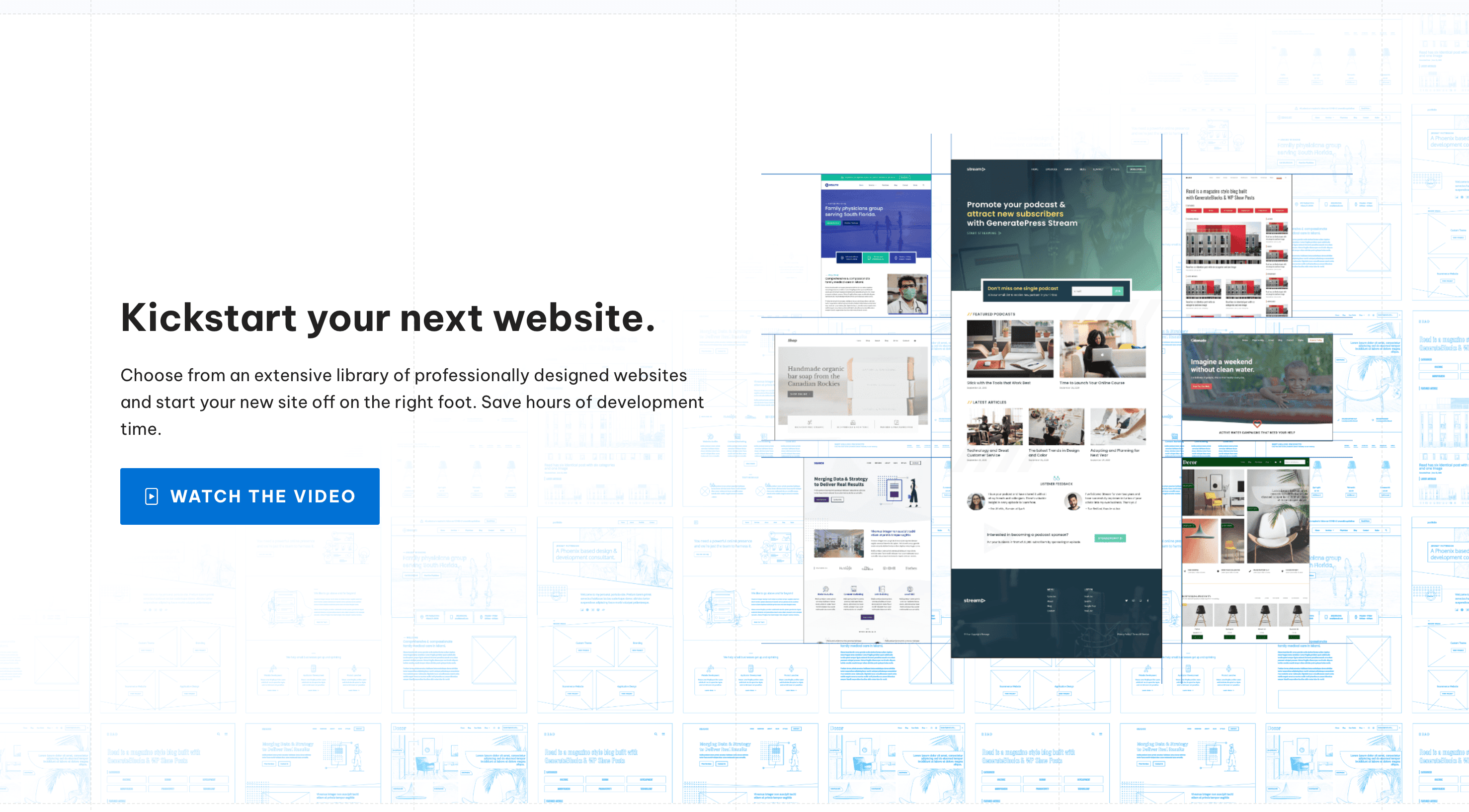
GeneratePress consistently delivers exceptional performance with a GTmetrix fully loaded time of just 0.9 seconds for the free version and 0.682 seconds for the premium version. (Source: WordPress.org)
This theme is built with a focus on performance from the ground up. Its modular approach allows you to activate only the features you need, preventing unnecessary code from loading on your site.
GeneratePress Premium ($249 lifetime) provides additional modules for extended functionality while maintaining the theme’s commitment to performance. Each module can be individually activated or deactivated based on your needs.
3. Kadence
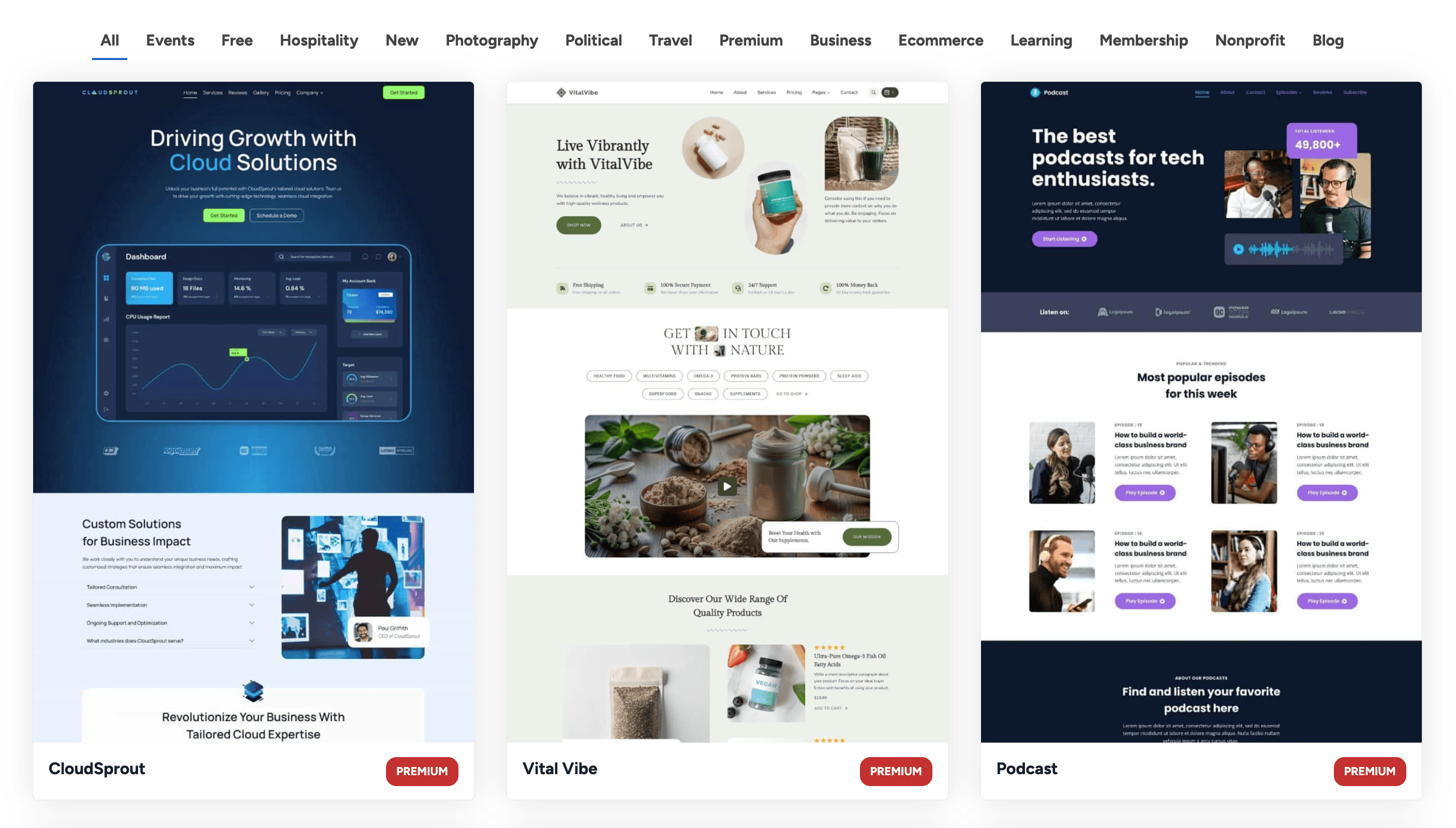
Kadence delivers impressive performance with a GTmetrix LCP of 0.719 seconds for its premium version. It’s particularly well-optimized for WooCommerce sites, making it an excellent choice for online stores. (Source: WP Glossy)
The theme achieves its speed through careful code optimization and smart resource loading. It includes a header builder, customizer options, and pre-built starter templates without sacrificing performance.
Kadence offers both free and premium versions, with the premium option providing additional features like custom fonts, hooked elements, and WooCommerce extras.
4. Neve
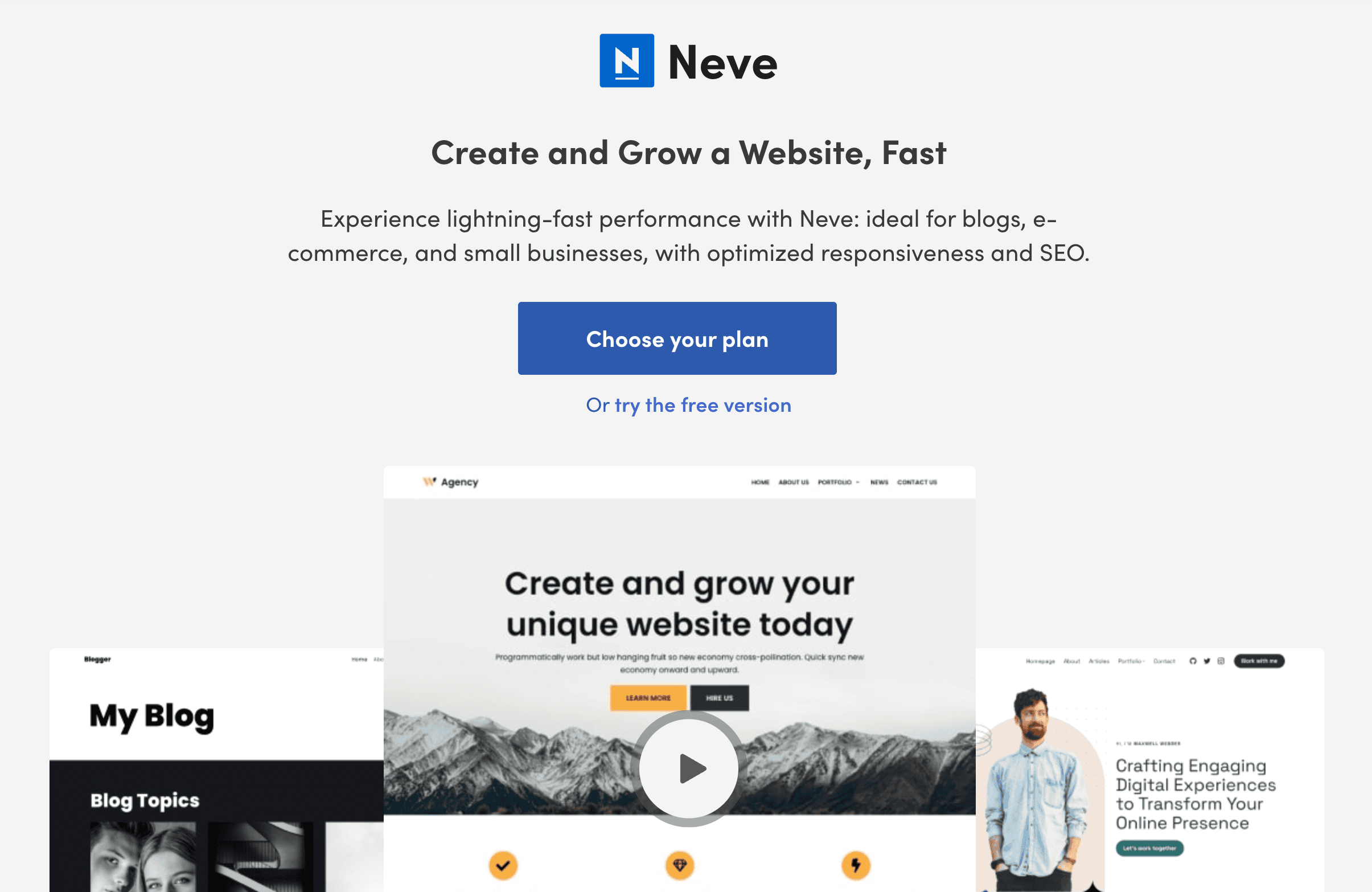
Neve excels in performance testing with a Google PageSpeed score of 97/100 and GTmetrix performance rating of 95.33%. This lightweight theme is built for speed while maintaining excellent compatibility with page builders. (Source: Jack Cao)
The theme uses modern web technologies and optimized code to deliver fast-loading pages. Its AMP-ready design ensures good performance on mobile devices, which is crucial for both user experience and SEO.
Neve’s free version includes most performance optimizations, while the Pro version adds more design options and integration capabilities.
5. Hello Elementor
Hello Elementor stands out with a remarkably small page size of just 980KB and a mobile PageSpeed score of 91/100. As the official companion theme for the Elementor page builder, it’s designed specifically for performance when using this popular page builder. (Source: WP Rocket)
The theme itself is intentionally minimalist, providing only the essential structure needed to work with Elementor. This bare-bones approach eliminates any unnecessary code or features that might slow down your site.
Hello Elementor is completely free and works best for sites built entirely with the Elementor page builder.
Performance Metrics Explained
Understanding performance metrics helps you evaluate theme speed more effectively. Here are the key measurements used to assess WordPress theme performance:
Largest Contentful Paint (LCP)
LCP measures when the largest content element becomes visible to users. This metric focuses on what users actually perceive as the main content loading. Fast themes typically have an LCP under 2 seconds.
For WordPress sites, LCP often involves header images, featured posts, or above-the-fold content. Themes that optimize these elements deliver better user experiences by showing important content quickly.
Page Size
Page size refers to the total file size that must be downloaded to display your page. Smaller pages load faster, especially on mobile connections. The most efficient themes generate pages under 1MB in size.
| Theme | Average Page Size | Load Impact |
|---|---|---|
| Hello Elementor | 980KB | Very Low |
| GeneratePress | ~1MB | Very Low |
| Astra | ~1.2MB | Low |
| Kadence | ~1.3MB | Low |
| Neve | ~1.1MB | Low |
| Average Theme | 2.5MB+ | High |
This table illustrates how the top performance-focused themes maintain significantly smaller page sizes compared to average WordPress themes. Each kilobyte saved improves loading speed, especially on mobile networks.
HTTP Requests
HTTP requests occur when your browser needs to fetch resources (images, scripts, styles) from the server. Fewer requests lead to faster page loads, as each request adds time to the loading process.
Speed-optimized WordPress themes minimize HTTP requests through techniques like CSS/JS combining, icon fonts or SVGs instead of images, and smart resource management. The best themes keep requests under 20 for a typical page.
Google PageSpeed Score
Google PageSpeed Insights measures both mobile and desktop performance on a scale of 0-100. This comprehensive score considers multiple factors including load time, interactivity, and visual stability.
The fastest WordPress themes typically achieve scores above 90 on both mobile and desktop tests. These high scores correlate with better search rankings and user experiences.
Detailed Speed Comparison
Let’s examine how these top themes perform across various metrics to help you understand their relative strengths.
| Theme | GTmetrix LCP | Load Time | PageSpeed Score (Mobile) |
|---|---|---|---|
| Astra | 1.8s | 2.1s | 93/100 |
| GeneratePress | 0.383s | 0.436s | 95/100 |
| Kadence | 0.719s | 0.9s | 94/100 |
| Neve | 0.8s | 1.1s | 97/100 |
| Hello Elementor | 0.9s | 1.0s | 91/100 |
| Divi (For Comparison) | 3.2s | 3.2s | 75/100 |
As the comparison shows, GeneratePress consistently leads in raw performance metrics, with an exceptional GTmetrix LCP of just 0.383 seconds. This makes it nearly 8x faster than popular but heavier themes like Divi, which requires 51 requests even with optimizations. (Source: Start Blogging 101)
Real-World Performance Scenarios
While lab tests provide valuable data, real-world performance can vary based on hosting, content, and configuration. Here’s how these themes perform in typical business website scenarios:
| Website Type | Best Theme Option | Why It's Optimal |
|---|---|---|
| Small Business (Brochure Site) | GeneratePress | Extremely fast with minimal setup |
| E-commerce Store | Kadence | Optimized WooCommerce integration |
| Blog/Content Site | Astra | Balance of speed and content features |
| Custom Design (With Page Builder) | Hello Elementor | Perfect Elementor compatibility |
These recommendations account for both raw speed and the practical needs of different website types. The fastest theme isn’t always the best choice if it lacks features essential for your specific use case.
Performance with Page Builders
Many websites use page builders like Elementor, Beaver Builder, or Gutenberg blocks. Here’s how our top themes perform when paired with popular page builders:
Astra works exceptionally well with all major page builders. It’s optimized for Elementor, Beaver Builder, Brizy, and the WordPress block editor. Even with a page builder, Astra maintains a 0.5-second load time in optimal conditions. (Source: WinningWP)
GeneratePress also delivers excellent performance with page builders, though its interface integrates most seamlessly with the WordPress block editor. Kadence offers outstanding Elementor compatibility, while Hello Elementor is purpose-built for that specific page builder.
Best Practices for Optimizing Any WordPress Theme
While choosing a fast theme provides a strong foundation, properly optimizing your WordPress site requires additional steps. Even the fastest theme can be slowed down by poor implementation choices.
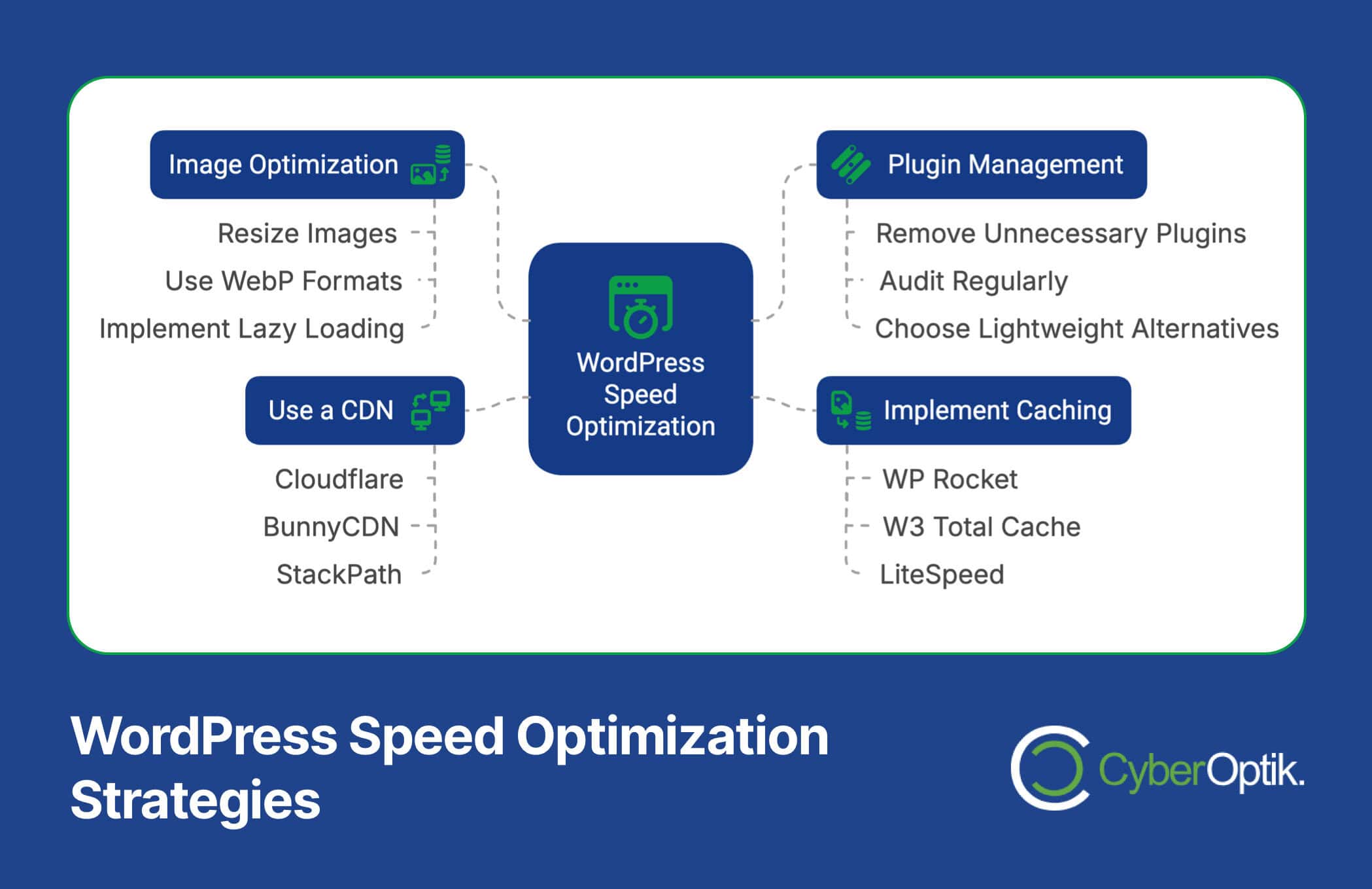
Implementing the following WordPress performance tips will help squeeze maximum speed from your chosen theme:
Image Optimization
Images often account for the largest portion of page weight. Properly optimizing images can dramatically improve load times regardless of your theme.
Always resize images to the exact dimensions needed before uploading. Use modern formats like WebP when possible, and implement lazy loading to defer off-screen images. These practices can reduce page size by 30-70% for image-heavy sites.
Plugin Management
Too many plugins—or poorly coded ones—can significantly impact your site’s performance. Each plugin adds code that must be processed, potentially slowing down your site.
Audit your plugins regularly and remove any that aren’t actively needed. Look for how plugins can compromise your website not just in terms of security but also performance. Choose lightweight alternatives when possible, and avoid plugins that load resources on pages where they aren’t used.
Implement Caching
Caching creates static versions of your dynamic WordPress pages, significantly reducing server processing time and speeding up delivery to users.
WordPress caching can be implemented through plugins like WP Rocket, W3 Total Cache, or LiteSpeed Cache. Most fast themes work well with these caching solutions, further enhancing performance.
Use a Content Delivery Network (CDN)
A CDN distributes your site’s static files across multiple servers worldwide, delivering content to users from the location closest to them. This geographic optimization reduces latency and improves load times.
Services like Cloudflare, BunnyCDN, or StackPath can be easily integrated with WordPress. They work particularly well with speed-optimized themes to deliver exceptional global performance.
How to Choose the Right Fast Theme for Your Needs
Selecting the ideal theme requires balancing pure speed with your specific business requirements. Here’s a framework to help you make the right choice:
Assess Your Technical Requirements
Start by listing features your site absolutely needs. Consider integration requirements, design flexibility, and specific functionality like e-commerce support or membership capabilities.
Match these requirements against what each fast theme offers natively. Remember that adding functionality through plugins can impact performance, so themes that include essential features built-in often perform better overall.
Consider Your Design Goals
While speed is important, your site still needs to look professional and align with your brand. Evaluate each theme’s design options, including:
- Header and footer layout flexibility
- Typography and color customization
- Pre-built templates and starter sites
- Mobile responsiveness and adaptability
- Special layout options (sidebars, content width, etc.)
Look for themes that offer the design flexibility you need without compromising on performance. Many fast themes now provide extensive customization through the WordPress Customizer rather than heavy page builder dependencies.
Evaluate Long-term Value
A theme is a long-term investment in your website’s foundation. Beyond current performance, consider factors that affect its future value:
| Factor | Questions to Ask |
|---|---|
| Update Frequency | How often is the theme updated? Does it quickly adopt WordPress changes? |
| Support Quality | What support options are available? How responsive is the team? |
| Documentation | Is documentation comprehensive and well-maintained? |
| User Community | Is there an active user community for additional help? |
| Developer Focus | Does the developer prioritize performance in each update? |
Themes with strong developer commitment to performance tend to maintain their speed advantages over time. Look for themes that explicitly focus on speed as a core value, not just a marketing point.
Testing Before Committing
Whenever possible, test a theme before fully committing to it. Most premium themes offer demos, and free versions often provide enough functionality to evaluate performance.
Consider setting up a staging site to test the theme with your actual content. This provides the most accurate picture of how the theme will perform in your specific scenario. Look for potential website performance problems that might arise with your particular content and plugin needs.
If you’re experiencing slow web page loading speed, switching to one of these performance-optimized themes can make a significant difference. However, remember that theme selection is just one component of a comprehensive speed optimization strategy.
Conclusion: Balancing Speed and Functionality
The fastest WordPress theme is ultimately the one that meets your specific needs while delivering excellent performance. Based on our testing and real-world implementation for clients, here are our recommendations:
- Best Overall: GeneratePress – Outstanding performance with flexible options
- Best for E-commerce: Kadence – Exceptional WooCommerce optimization
- Best Free Option: Astra Free – Remarkable performance without cost
- Best for Elementor: Hello Elementor – Purpose-built for this popular page builder
- Best for Content Sites: Neve – Great balance of features and speed
Remember that theme speed is just one aspect of WordPress performance. For optimal results, combine a fast theme with proper hosting, image optimization, caching, and careful plugin selection.
By understanding what makes WordPress themes fast and choosing one aligned with your business needs, you can create a website that not only impresses visitors with its speed but also converts them into customers with its functionality.
Want personalized guidance on selecting the best WordPress theme for your specific business needs? Contact our team for a free consultation about your website performance options.




